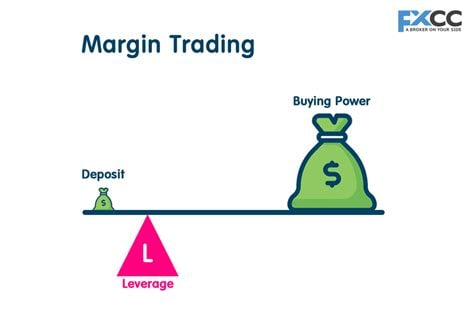
- Forex: What Is Margin?
-
FAQ About Forex Margin
- What is margin in forex and how does it work?
- How is margin calculated?
- What is the margin level?
- What is a stop-out level?
- What is a margin call?
- What is the difference between a margin account and a cash account?
- Can I trade forex without using margin?
- What are the risks of trading forex with margin?
- How can I manage my margin risk effectively?
- Is margin trading suitable for all traders?
Forex: What Is Margin?

Greetings, readers! Today, we embark on an educational journey to unravel the intricacies of forex margin trading. Forex, short for foreign exchange, involves the trading of currency pairs, where traders speculate on the fluctuations in their values. Margin trading in forex enables traders to access leveraged positions, potentially magnifying their profits but also amplifying their risks.
Understanding Margin
Margin, in the context of forex trading, refers to the amount of capital a trader deposits with their broker as collateral for leveraged trades. Brokers typically offer leverage ratios ranging from 10:1 to 500:1, which means a trader can control a position worth up to 500 times their margin deposit. For example, with a 100:1 leverage ratio, a $1,000 margin deposit allows a trader to trade up to $100,000 in currency pairs.
Margin Requirements
Each currency pair has a specific margin requirement determined by the broker, usually expressed as a percentage of the notional value of the trade. For instance, if the EUR/USD currency pair has a 1% margin requirement, a trader would need to deposit $1,000 as margin to trade a $100,000 position. Margin requirements vary across brokers and currency pairs and can change based on market volatility.
Benefits of Margin Trading
- Increased profit potential: Margin trading enables traders to control larger positions with a relatively small capital outlay, potentially multiplying their profits.
- Flexibility: Leverage provides traders with the flexibility to trade larger positions without tying up all their capital.
Risks of Margin Trading
- Magnified losses: While leverage can enhance profits, it also amplifies losses. If the market moves against a trader’s position, they can lose more than their initial margin deposit.
- Margin call: If a trader’s losses exceed their margin deposit, the broker may issue a margin call, requiring them to deposit additional funds to maintain their position or face liquidation.
Margin Calculations
To calculate the margin required for a forex trade, traders use the following formula:
Margin = (Notional Value) x (Margin Requirement)
For example, to calculate the margin for a $100,000 EUR/USD trade with a 1% margin requirement:
Margin = ($100,000) x (1%) = $1,000
Margin Trading Strategies
Margin trading strategies vary depending on the trader’s risk tolerance and trading style. Some popular strategies include:
- Scalping: Placing multiple small, short-term trades to generate small but frequent profits.
- Trend following: Holding positions for extended periods, following the overall trend of a currency pair.
- Hedging: Using correlated currency pairs to reduce overall portfolio risk.
Conclusion
Margin trading in forex is a powerful tool that can both enhance profits and magnify risks. By understanding the concept of margin, traders can make informed decisions about leveraged trading. It’s crucial to carefully consider the benefits and risks, develop appropriate trading strategies, and manage their risk exposure effectively. For further insights, explore our other informative articles on forex trading.
FAQ About Forex Margin
What is margin in forex and how does it work?
Margin in forex is a deposit you make to secure an open position. It serves as security for the broker against potential losses, allowing you to control a larger position size than your available balance.
How is margin calculated?
Margin = (Position Size × Contract Size) × Margin Percentage
What is the margin level?
The margin level is the ratio of your equity to your used margin. It indicates the health of your trading account and determines if a margin call is triggered.
What is a stop-out level?
A stop-out level is a predetermined margin level at which your broker will automatically close your positions to prevent further losses.
What is a margin call?
A margin call occurs when your margin level falls below the minimum requirement. You will receive a notification to deposit additional funds or your positions will be closed.
What is the difference between a margin account and a cash account?
In a margin account, you can trade with leverage, while in a cash account, you can only trade with the funds available in your balance.
Can I trade forex without using margin?
Yes, you can trade forex without margin, but your position size will be limited to your available balance.
What are the risks of trading forex with margin?
The primary risk is the possibility of losing more than your initial deposit if the market moves against you. Margin trading amplifies both profits and losses.
How can I manage my margin risk effectively?
Proper risk management techniques include using stop orders, limiting your leverage, and monitoring your margin level closely.
Is margin trading suitable for all traders?
Margin trading carries significant risk and is not appropriate for all traders. Only experienced traders with sound risk management skills should consider using margin.

